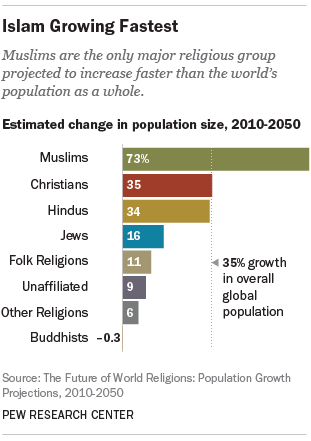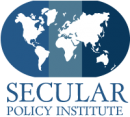The weekly report on US and world government
by Edwina Rogers
International
Is it constitutional for government council meetings to hold prayers in Canada? This issue has reached the Canadian Supreme Court and we won! The Secular Policy Institute’s coalition includes 21 groups from Canada, more than any other country except the United States. Several of them support the Quebec Secular Movement (Mouvement lakque quebecois, or MLQ) which defended freedom of conscience before the Supreme Court of Canada. They say they won, but they also say expect a finding any day.
Their argument is based on the Charter of Fundamental Human Rights, as applied to a citizen of the town of Saguenay. Starting in December 2006, council meetings there were opened by a prayer followed by a sign of the cross. Also, the council rooms were adorned with Catholic religious symbols (a crucifix, a Sacred Heart statue). The complainant argued these demonstrations of religious convictions offended his personal beliefs and contravened constitutional law, particularly the notion of freedom of conscience. He contacted MLQ after the mayor refused his complaint.
The present matter was brought before the Human Rights Tribunal in 2010 which found in favor of MLQ and ordered Saguenay to stop the prayers and remove the religious icons from the Council rooms. In 2013 the Court of Appeal quashed the judgment of the Human Rights Tribunal. The MLQ then appealed that decision to the Supreme Court of Canada.
Obama Submits Climate Pledge to UN, But ItÔÇÖs DOA in Senate
The Obama Administration submitted its intended nationally-determined contribution (or INDC) on climate change to the Paris Accord on March 31st. Other parties to the UN Framework Convention on Climate Change that have made their submissions are: the European Union, Russia, Switzerland, Norway, Mexico, and Gabon. They are all posted on the UNFCCC website.
The five-page U.S. INDC pledges that the United States will reduce its greenhouse gas emissions by 26 to 28% below 2005 levels by 2025. The White House proposes to achieve the target through a long list of administrative actions, none of which require new legislation from Congress.
However, all of these policies require the co-operation of Congress through the appropriations process.
Still to be determined in the negotiations on the Paris Accord, which are scheduled to conclude at the twenty-first Conference of the Parties to the UNFCCC (or COP-21) in December in Paris, is the nature of the agreement. The negotiating text says that it will take ÔÇ£the form of a protocol, another legal instrument, or an ÔÇÿagreed outcome with legal force,ÔÇØ and will be applicable to all parties. This sounds like the Paris Accord, whatever form it takes, will be legally binding. If so, it seems inescapable that U. S. participation will require Senate ratification. Ratification requires a two-thirds majority vote in the Senate.
The fact that Senate ratification requires a two-thirds majority vote means that the Paris Accord is almost certainly dead on arrival in the current Senate. Here are articles on the submission in the New York Times and the Washington Times. Climate has been the top topic that Members of Congress have wanted to discuss with SPI Fellows.
U.S. Congress
The House and Senate are in recess this week.
Federal Religious Freedom Law Has Unintended Consequences, Legislative Fix Needed
Over the last 20 years, 19 states have passed laws modeled on the federal Religious Freedom Restoration Act (RFRA), which was enacted in 1993 as championed by Senator Schemer and signed by President Clinton. But just this year, almost the same number, 15, have seen such bills introduced, generating enormous controversy across the country, particularly in Indiana. The law is being used to allow discrimination in commerce and to deny some access to reproductive health as based on the employer’s religious beliefs.
The federal law should be amended or repealed. We are scheduling meetings in the Senate for the last week in April to push for a correction. Please email me at edwina@secularpolicyinstitute.net if you can participate.
Muslims To Be Second Largest Religious Group In US By 2050
 As secular people we like to think that demographics are on our side. Now according to a new Pew Study, The Future of World Religions: Population Growth Projections, 2010-2050, Muslims will nearly double their numbers in Europe – to more than 10 percent – by 2050 and will out number Christians by 2070. Meanwhile, those unaffiliated with religion stagnate as a percentage of the population, the numbers say. Surely that cannot be true?
As secular people we like to think that demographics are on our side. Now according to a new Pew Study, The Future of World Religions: Population Growth Projections, 2010-2050, Muslims will nearly double their numbers in Europe – to more than 10 percent – by 2050 and will out number Christians by 2070. Meanwhile, those unaffiliated with religion stagnate as a percentage of the population, the numbers say. Surely that cannot be true?
The report, by Pew Research Center, also predicts that Muslims will become the second-largest religious group in the US ÔÇô at 2.1% ÔÇô by 2050.
EuropeÔÇÖs Muslim population, boosted by large families and immigration, will nearly double, from less than 6% (43 million people) in 2010 to more than 10% (71 million people) in 2050, the forecast estimates.
The US by 2050 will still have more Christians than any other denomination, according to the report, but they will decline from 77% to 66% of the population.
Although the Muslim population represents a tiny fraction of Americans ÔÇô about 1% ÔÇô it is set to grow rapidly over the next four decades. The report predicts Muslim will surpass Jews to become the second-largest religious group in the US by 2050 ÔÇô while still only representing 2.1% of the whole country.
High fertility coupled with falling infant mortality rates bode well for Christianity and Islam in the developing world, and researchers predict that four of every 10 Christians in the world will live by the middle of the century in sub-Saharan countries, where women on average have twice as many children as in North America and three times as many as in Europe.
The young religious people of the developing world contrast sharply with ageing and increasingly secular westerners content to keep their families small.
The report predicts that Muslims and Christians will each make up roughly 30% of the worldÔÇÖs population by 2050, largely due to high fertility rates in the developing world and the continuing decline of Christianity in the west.
In North America, ChristianityÔÇÖs losses correlate with the unaffiliatedÔÇÖs gain, as atheists, agnostics and those who donÔÇÖt associate with any religion are set to increase from 17% to 26% of the whole, according to Pew.
Europe, the only region whose total population is projected to shrink, will see its Christian population diminish by 100 million people to about 65%, according to the report.
Although Christians will still be the UKÔÇÖs largest religious bloc in 2050, the report predicts they will no longer represent the majority of Britons. In France, unaffiliated people will overtake Christians as the new majority.
But the atheists, agnostics and other unaffiliated of the world, despite their larger share of the population in countries like the US, France and Japan, will see their global share diminish because of an older median age and a tendency to have smaller families.
Muslim populations, on the other hand, are predicted to grow far faster than any other religion over the next 45 years, especially in the Middle East, India and sub-Saharan Africa.
By 2050, most Jews will live in Israel, the report predicts, noting that eight in 10 already live there or in the US. The global Jewish population will grow slightly, boosted by the longest average lifespan among major religions ÔÇô more than 20% of all Jews are 60 or older.
The reportÔÇÖs authors concede there are many variables that could make dramatic differences between their projections and how the world actually turns out. In four decades, there will be natural disasters and wars, mass migrations and political revolutions, each with knock-on effects that change what people believe and where they choose to live.
The 1.3 billion people of China also posed a conundrum to then researchers, who had to rely on sometimes unreliable data about a country with a handful of recognized religions, hundreds of pervasive folk faiths and the active but unquantifiable presence of many Christian missionaries.
On the record, more than 50% of Chinese people are unaffiliated. Off the record, China could already be in the early stages of a large religious shift.
ÔÇ£Adherents of other religions, including Christians who worship in unregistered churches, may be reluctant to reveal their religious identity to officials or strangers,ÔÇØ the authors write, also noting that hundreds of millions of people who have recently moved to cities likely uprooted their religious practices.
Simply, ÔÇ£there are no sources adequate to measure patterns of religious switching across ChinaÔÇØ, they conclude ÔÇô meaning the rapid expansion of an already simmering Christian movement could dramatically affect ChristianityÔÇÖs numbers worldwide.
They also concede that the research is limited: of the voluminous data they pored over to make their forecast, the vast majority does not distinguish Shia from Sunni Muslims or Catholic from Protestant or Orthodox Christians, for instance. The researchers excluded Jews who identified as such ethnically or culturally but not religiously.
ÔÇó
6,384 – What Is This Number
The SPI staff have been hard at work looking for all secular groups on Earth. We’ve even written software robots to scour the Internet and identify duplicate findings. We now have 6,384 worldwide secular groups in our directory and expect to post this to the SPI website soon.
